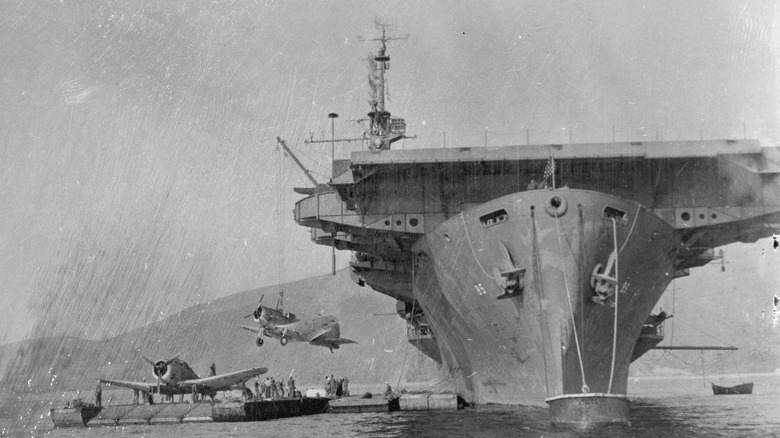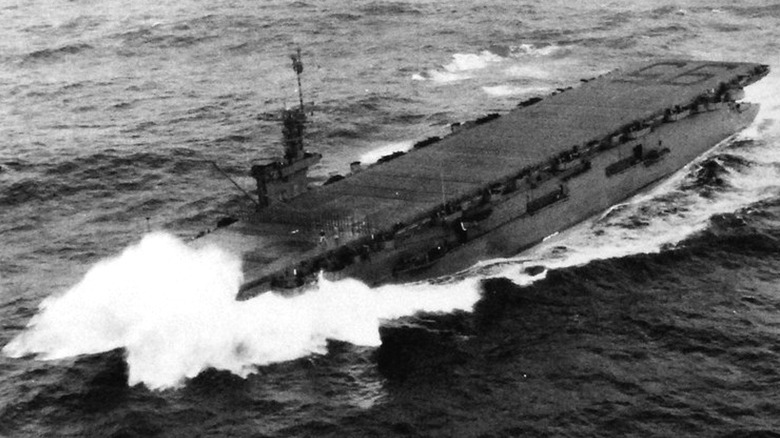The Last US Aircraft Carrier Sunk At War: All About The USS Bismarck Sea
These days, the United States has more aircraft carriers than any other country in the world. As of this writing, the U.S. has 11 aircraft carriers and is building more to replace some of its older vessels. The latest carrier class, the Gerald R. Ford, contains the world's largest aircraft carrier capable of carrying close to 100 aircraft. These U.S. aircraft carriers are extremely hard to sink, but that hasn't always been the case. Since the U.S. began using carriers in 1922, several have been claimed by Davy Jones' locker.
Losing an aircraft carrier is a significant loss for any nation, as they don't merely hold a host of aircraft. These carriers are also staffed by hundreds if not thousands of sailors. Since the U.S. began using them in war, over a dozen have been sunk or damaged so severely they were scuttled.
Of course, some were purposely destroyed when testing atomic weapons, but most of America's lost carriers met their fates during wartime operations. Fortunately, the U.S. hasn't lost a carrier in a long time, and with any luck, that will remain the case. The last U.S. aircraft carrier that was sunk during battle was the USS Bismarck Sea (CVE-95), which was used as an escort carrier capable of holding 27 aircraft. It was taken out by two Japanese kamikaze aircraft during the Battle of Iwo Jima on February 21, 1945.
The USS Bismarck Sea
The Bismarck Sea was one of many Casablanca-class escort carriers built during World War II. It was commissioned on May 20, 1944 and is the only U.S. vessel named in honor of the Battle of the Bismarck Sea. The carrier ferried aircraft to and from places like Pearl Harbor, Hawaii, and the Marshall Islands. She took part in several operations against Japanese targets through January 1945, and in February, the Bismarck Sea made its way to the island of Iwo Jima.
The Bismarck Sea took on additional fighters, placing seaplanes beneath deck without emptying their fuel tanks. Soon after, Japanese planes approached the carrier, which held 37 aircraft. This was far more than it could accommodate, and when a Japanese plane made it through the carrier's defenses to slam into its hull beneath the deck, it impacted the magazine and started a fire, scattering munitions all over the place. This disabled the ship's steering, but the crew managed to put out the fire.
Just when it looked like the worst was behind the crew of the Bismarck Sea, a second plane slammed into the deck holding the seaplanes laden down with fuel, causing a second huge explosion. Soon, a fire engulfed much of the carrier, and the order to abandon ship was ultimately given. The dangerous conditions made rescue difficult, and the Bismarck Sea sank, taking 318 crew with her.
[Featured image by U.S. Navy via Wikimedia Commons | Cropped and scaled | Public Domain]

